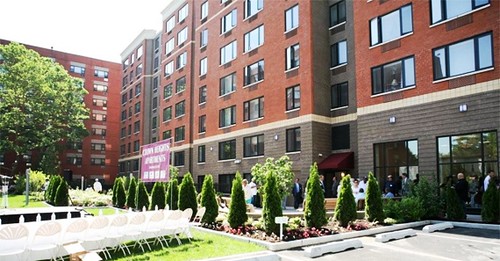When affordable housing isn't, really

Posted March 1, 2013 at 1:27PM
Many people who care deeply about cities, including yours truly, believe that there should be accommodation for all: today’s America is increasingly diverse with respect to ethnicity, as I discussed in my last post. And today’s America is also diverse with regard to economic circumstances.
The neighborhoods I like best have a mix of housing types, from studio apartments to 5-bedroom houses, offered at different price points. Some homes may be subsidized to be affordable to buyers or renters who qualify under income guidelines. This creates an interesting mix of people, where the firefighter, teacher, or artist can interact with those in business, medicine, or government. Residents may still gravitate to others more or less like themselves, but they also – especially the kids – will have an opportunity to learn that folks from diverse circumstances are frequently more alike than one might think.
Idealistic? Sure. But it also happens to be public policy, and I consider that a very good thing. Life will always be unfair to an extent, but there are steps we can take to help make it a little more fair when it comes to housing. Most cities have some sort of affordable housing program, and many have inclusionary zoning, requiring that a degree of affordability must be included in new development. Some developers do a spectacular job at it. The federal government has several programs that support affordable housing, including a significant tax credit for development of low-income homes.
But, in a very interesting article in Next City, Matt Bevilacqua reveals that these programs don’t always accomplish their purpose, because the definition of “affordable” may not be suited to actual neighborhood circumstances. Look at the map of New York City by the Association for Neighborhood and Housing Development (ANHD), which shows an amazingly large part of the city where housing intended to be affordable is actually UNaffordable to the average household in the local neighborhood. According to Bevilacqua, the report found that “up to two-thirds of [NYC’s affordable] units built since 2003 are too expensive for residents earning their given neighborhood’s median income.”
This may be one reason why current residents – particularly renters – of revitalizing neighborhoods fear being pushed out. If residents can’t afford even the “affordable” units in new and rehabbed buildings, their fears may be acutely well-founded.
A big reason why this oxymoronic situation can be the case in some places is that affordability formulas are generally based on percentages of area median income, measured not just within but beyond city borders and taking in wealthy suburbs. Especially in an area as large as New York, and with as much wealth, the area-wide median may be much higher than if the median were measured for smaller areas. (How large those areas should be strikes me as tricky, and I don’t pretend to have the answer. Interested readers may want to probe ANHD’s 61-page report, Real Affordability, for more detailed analysis.)
Related posts:
- Bank of America supports affordable green neighborhoods with grant program (June 1, 2012)
- The amazing resurgence of the South Bronx (October 28, 2011)
- Is 'gentrification' always bad for revitalizing neighborhoods? (October 19, 2011)
- The spectacular 'green way' to build affordable housing (October 13, 2011)
- Tassafaronga Village brings affordable gold and platinum to East Oakland (June 30, 2010)
- New report: how city parks can support affordable housing (May 28, 2009)
Move your cursor over the images for credit information.


